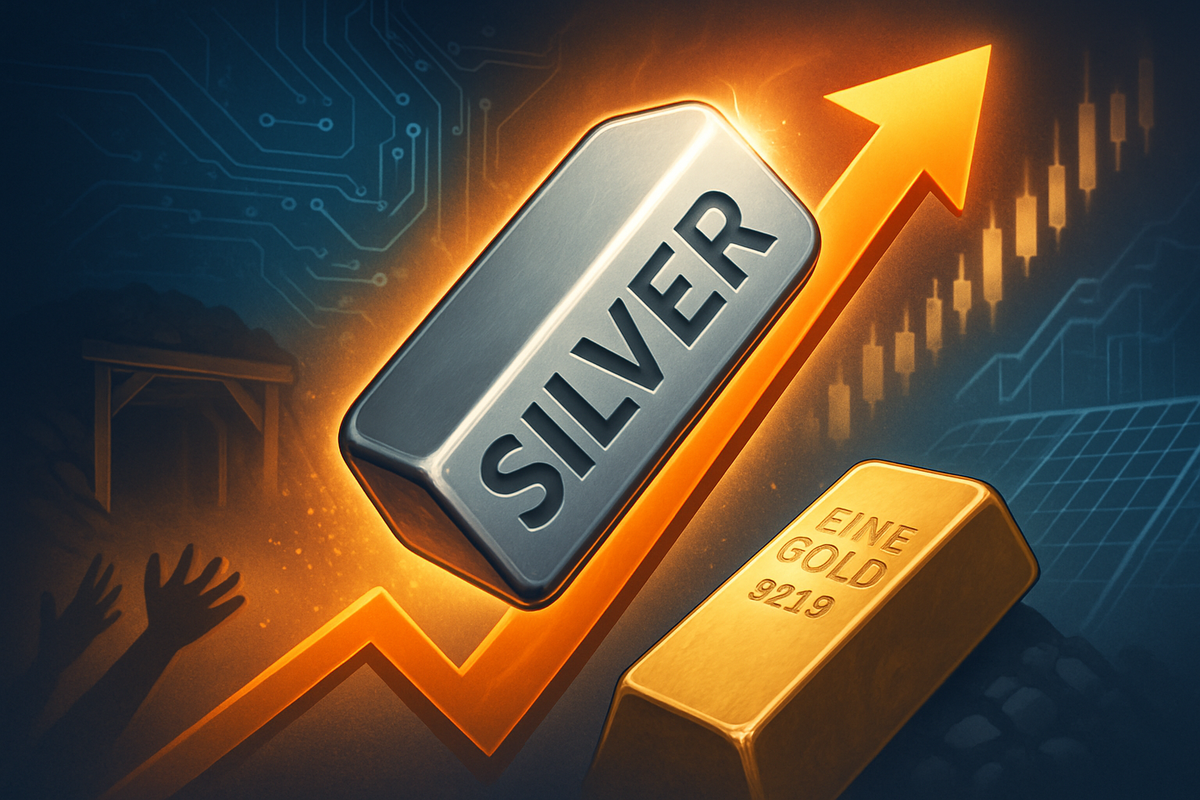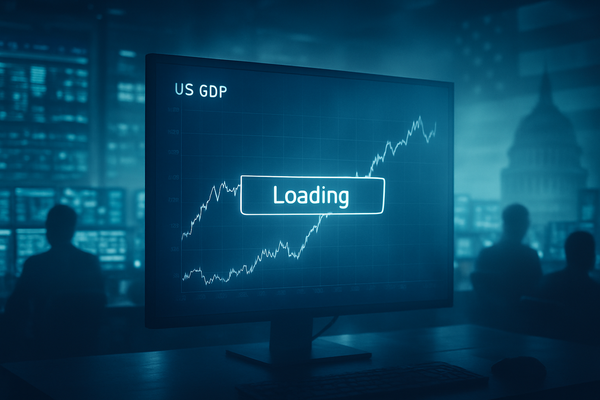Silver's Historic 70% Surge in 2025: A Deep Dive into Tight Supply and Market Dynamics

October 14, 2025 – The global financial markets are buzzing as silver, the often-overlooked precious metal, has staged a spectacular rally in 2025, with prices soaring by an astonishing 70% year-to-date. This unprecedented surge has seen silver not only break its all-time high but also significantly outpace gold, which itself has climbed by a robust 50-55% over the same period. The driving force behind this meteoric rise is a "perfect storm" of tightening global supply and an explosion in both industrial and investment demand, signaling a profound shift in the precious metals landscape.
The implications of this rally are far-reaching, impacting everything from industrial supply chains to investment portfolios. With silver prices reaching over $50 per ounce, and even touching $52.58 in London markets by mid-October, the market is grappling with severe physical shortages, evidenced by plummeting inventories and skyrocketing lease rates. This phenomenon is indicative of deeper structural issues within the silver market, challenging conventional wisdom and forcing a re-evaluation of its role as both a monetary and industrial asset.
Unpacking the Silver Squeeze: A Confluence of Factors
The remarkable ascent of silver in 2025 is not a sudden anomaly but the culmination of several reinforcing factors that have created an acute supply-demand imbalance. The market has been in a structural deficit since 2021, and 2025 marks the seventh consecutive year where annual silver production has failed to meet combined industrial and investment demand. Mine supply, a crucial component, has been on a downward trend, decreasing by 7% since 2016, and the reliance on silver as a byproduct of other metals means that a slowdown in primary mining activities further exacerbates its scarcity.
Physical inventories, particularly in the London market, have plunged by 33% since 2021, leading to severe shortages and delivery delays reported by mints worldwide. This acute scarcity has fostered a classic short squeeze scenario, with silver lease rates in London skyrocketing to over 30% on a one-month annualized basis, making it incredibly expensive to borrow physical metal. Logistical challenges and earlier speculation about potential tariffs on silver also triggered significant inventory dislocations, contributing to the current tightness.
On the demand side, the story is equally compelling. Silver's indispensable role in the accelerating green energy transition and advanced technologies has fueled an explosion in industrial consumption. It is a critical component in solar panels, electric vehicles (EVs), and various electronics, with industrial demand now accounting for 50-59% of total consumption. Projections even suggest that solar energy alone could consume 85-98% of current global silver reserves by 2050, highlighting the unsustainable trajectory of current supply. Furthermore, surging demand from AI hardware and 5G infrastructure, where silver has no viable substitutes, adds another layer of pressure.
Investment demand has also been robust, driven by global economic uncertainties, geopolitical tensions, and concerns over US fiscal policy, positioning silver as a key safe-haven asset and an inflation hedge. India, a major consumer, has significantly increased its silver purchases, while global silver-backed Exchange-Traded Products (ETPs) have seen substantial inflows, adding 95 million ounces in the first half of 2025 alone. The expectation of interest rate cuts by the US Federal Reserve throughout 2025 has also reduced the opportunity cost of holding non-yielding assets, further bolstering silver's appeal.
Corporate Fortunes Diverge: Winners and Losers in the Silver Rally
The dramatic rise in silver prices has created a clear dichotomy of winners and losers across various sectors, significantly impacting corporate bottom lines and strategic decisions. For silver mining companies, the surge represents a bonanza, translating directly into expanded profit margins and substantially increased revenues. Major players like Pan American Silver Corp. (NASDAQ: PAAS), Hecla Mining Company (NYSE: HL), and First Majestic Silver Corp. (NYSE: AG) are experiencing a significant boost to their valuations and share prices. Their existing reserves and production capacity are now worth considerably more, encouraging increased exploration and development efforts, albeit with a lag time for new supply to come online. Streaming companies such as Wheaton Precious Metals Corp. (NYSE: WPM) also stand to benefit immensely, as the value of their fixed-price silver purchases skyrockets.
Conversely, industries heavily reliant on silver as a key input material are facing mounting cost pressures. Manufacturers of solar panels, electric vehicles, and various electronic components are seeing their raw material expenses skyrocket. Companies in these sectors, which include tech giants and renewable energy innovators like First Solar (NASDAQ: FSLR) and JinkoSolar (NYSE: JKS), must now contend with higher production costs. This could force them to absorb higher costs, impacting profit margins, or pass them on to consumers, potentially affecting demand for their products. For instance, Indian silver-intensive sectors have already reported 10-15% cost hikes. Similarly, electronics companies like Apple Inc. (NASDAQ: AAPL) and EV producers like Tesla, Inc. (NASDAQ: TSLA) will face increased manufacturing expenses, challenging their profitability in competitive markets.
Exchange-Traded Funds (ETFs) backed by physical silver, such as the iShares Silver Trust (NYSE: SLV), have seen substantial appreciation, offering investors a direct way to participate in the silver rally. These funds directly reflect the 70% increase in the spot price of silver, minus their respective expense ratios. Silver miner ETFs, like the Global X Silver Miners ETF (NYSE: SIL), are also experiencing amplified positive performance as the underlying mining companies benefit from higher valuations. However, the acute physical shortage has led some Indian mutual funds to temporarily suspend fresh lump sum subscriptions to their Silver ETF Fund of Funds, highlighting the challenges of physical acquisition in a tight market.
Wider Significance: A Bellwether for Broader Market Trends
Silver's spectacular performance in 2025 is more than just a commodity rally; it serves as a potent indicator of broader shifts within the global financial landscape and industrial trends. The outperformance of silver over gold, with its 70% surge dwarfing gold's 50-55% gain, underscores silver's unique dual nature as both a monetary and an industrial metal. This dynamic positions silver as a critical barometer for the health of the global economy, particularly the pace of the green energy transition and technological advancement.
This event fits squarely into the growing trend of resource nationalism and the increasing recognition of critical raw material vulnerabilities. As nations race towards decarbonization and digital transformation, the secure supply of essential metals like silver becomes a strategic imperative. The tight supply conditions could prompt governments and industries to invest more heavily in domestic mining, recycling infrastructure, and potentially even explore strategic stockpiling. Regulatory bodies might also begin to scrutinize futures markets more closely to prevent excessive speculation in physically constrained markets.
Historically, periods of significant silver price surges have often coincided with broader economic instability or periods of high inflation, acting as a safe-haven asset. The current rally echoes the late 1970s and early 2010s, where similar concerns about currency debasement and systemic risk fueled strong demand for precious metals. The current environment, marked by persistent inflation, geopolitical tensions, and concerns over sovereign debt, provides a fertile ground for such a rally, signaling a growing distrust in traditional financial systems and a flight to tangible assets. The ripple effects are already being felt in sympathetic price strength and increased volatility in gold, platinum, and palladium markets, suggesting a broader tightening across the precious metals complex.
What Comes Next: Navigating the Future of Silver
Looking ahead, the silver market is poised for continued volatility and significant strategic adjustments. In the short term (2025-2026), the outlook remains largely bullish, with some experts forecasting silver to reach $60 per ounce over the next year and potentially $65 by 2026. This is driven by persistent supply deficits, robust industrial demand from green energy and electronics, and ongoing investment interest. However, silver's historical volatility means sharp corrections (20-30%) are possible, even within a bull market, presenting both risks and potential buying opportunities.
For silver mining companies, sustained high prices will incentivize increased investment in exploration and development, though new supply has a long lead time. Mergers and acquisitions may also pick up as companies seek to expand reserves. Industrial users, facing significantly higher input costs, will be compelled to innovate, investing in R&D to reduce silver content ("thrifting") or explore alternative materials. Diversifying supply chains, securing long-term contracts, and enhancing recycling efforts will become crucial strategies to mitigate price volatility and supply risks.
The long-term outlook for silver (beyond 2026) remains highly optimistic, with some ambitious forecasts suggesting prices could reach $75 or even $100-$200 per ounce by 2027-2030. This is underpinned by the indispensable role of silver in the accelerating green energy transition and technological advancements, coupled with deepening supply constraints due to declining ore grades and slow mine development. The market opportunities lie in silver as an inflation hedge and portfolio diversifier, benefiting miners and streaming companies, and supporting the growth of the green technology sector. Challenges include extreme volatility, liquidity concerns, and the ongoing cost pressures for industrial users.
Comprehensive Wrap-up: A New Era for the White Metal
The 70% surge in silver prices in 2025 marks a pivotal moment for the white metal, underscoring its dual importance as both a critical industrial commodity and a powerful safe-haven asset. The key takeaway is the severity of the global supply tightening, driven by declining mine output and overwhelming demand from burgeoning green technologies and investment flows. This imbalance has pushed silver into uncharted territory, outperforming gold and signaling a fundamental shift in market dynamics.
Moving forward, the market will remain highly sensitive to global economic data, interest rate policies, and geopolitical developments. Investors should closely monitor inventory levels in major exchanges, lease rates, and the performance of key industrial sectors that consume silver. The ongoing structural deficit suggests that the underlying bullish trend for silver is likely to persist for the foreseeable future, making it an attractive asset for diversification and hedging against inflation.
The lasting impact of this rally will likely be a re-evaluation of silver's strategic importance by governments and industries alike. It highlights the vulnerabilities inherent in a global economy increasingly reliant on finite resources for its technological and environmental ambitions. For investors, the message is clear: silver is no longer merely gold's junior partner; it has emerged as a formidable force in its own right, demanding serious attention in any well-diversified portfolio.
This content is intended for informational purposes only and is not financial advice



